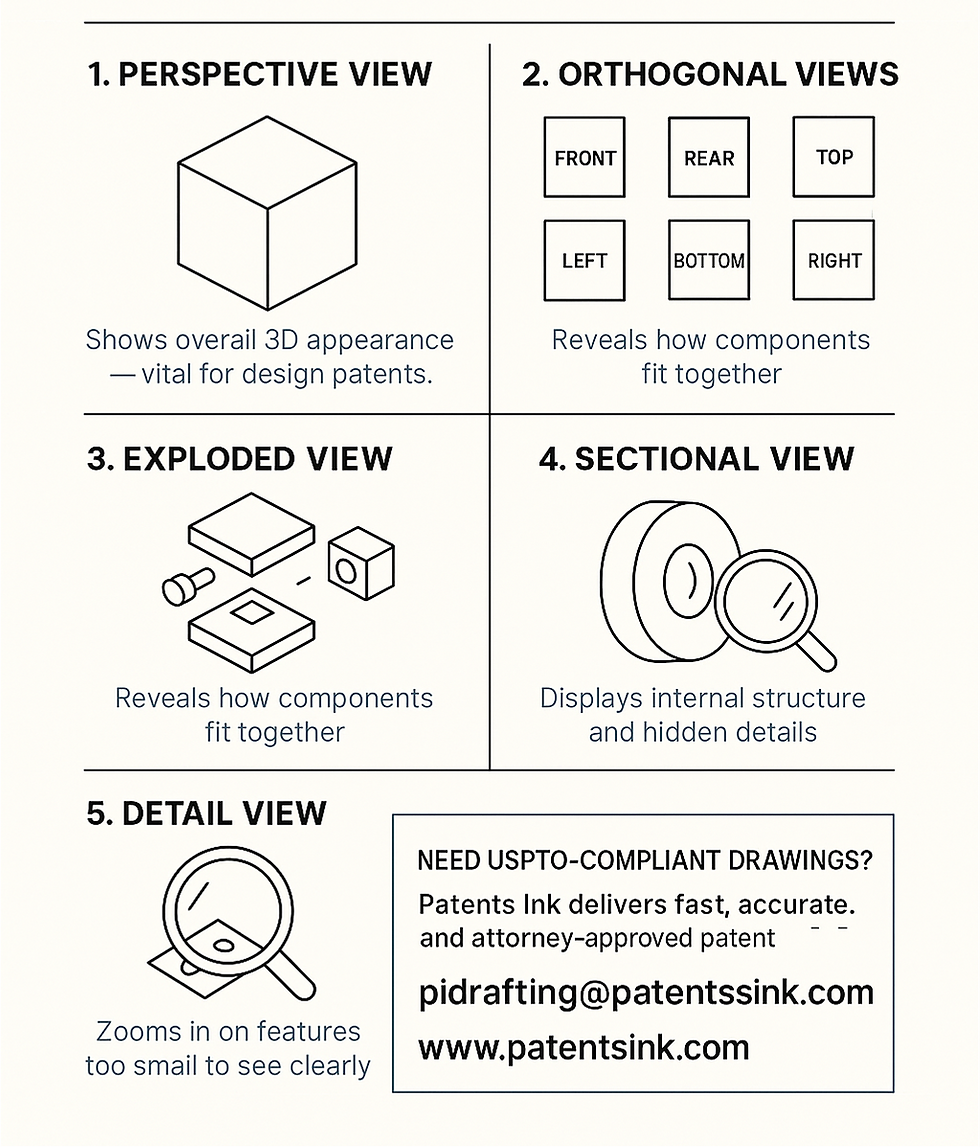How to Choose the Right Views for Your Patent Application
- mreches7
- Sep 3
- 2 min read

Why Views Matter in Patent Drawings
When preparing a patent application, the drawings must do more than depict the invention—they must fully disclose it. Patent examiners depend on different views in patent drawings to understand shape, structure, and function. Missing or incomplete views can result in office actions, costly delays, or even weakened patent protection.
At Patents Ink, we help attorneys and corporations determine exactly which views are necessary to ensure compliance and clarity.
Common Types of Views in Patent Applications
1. Perspective View
A perspective view gives examiners the best overall sense of the invention’s 3D appearance. While not mandatory for utility applications, it is often essential in design patent drawings, where ornamental features must be clearly shown.
2. Orthogonal Views (Front, Rear, Left, Right, Top, Bottom)
These six “standard views” provide a complete picture of the invention. The USPTO often requires these for design patents to ensure no detail is left unexamined.
3. Exploded View
Exploded views illustrate how components fit together, which is particularly helpful for complex mechanical inventions. They can make the difference in demonstrating novelty and functionality.
4. Sectional View
Sectional drawings show the interior structure of an invention by “cutting away” part of the object. This is critical when internal components, chambers, or pathways are part of the claimed invention.
5. Detail Views
When a specific feature (such as a hinge, connector, or interface) is too small to be seen clearly in the main figures, a magnified detail view ensures it is properly disclosed.
USPTO and PCT Requirements
Patent offices like the USPTO, PCT, and EPO all require that the invention be illustrated with sufficient detail for someone skilled in the art to understand it. Choosing the right views ensures that every aspect of the invention is disclosed without ambiguity, which helps avoid:
Rejections for insufficient disclosure
Objections for missing views
Risk of narrowing the scope of protection
Best Practices for Choosing Views
Think like the examiner: Ask, “What views would I need to fully understand this invention?”
Cover every angle: For design patents, always include all six orthogonal views.
Use exploded and sectional views strategically: Only when they add clarity and support the claims.
Avoid redundancy: Too many unnecessary views can clutter the submission and slow review.
Align with the specification: Every view should reinforce the written description.
The Value of Professional Judgment
Determining the right views isn’t just about checking boxes—it requires judgment and experience. At Patents Ink, our illustrators work closely with attorneys to recommend the optimal set of figures for each application, balancing compliance, clarity, and efficiency.
Final Thoughts
The right combination of views can make the difference between a smooth patent examination and costly delays. By partnering with a professional patent illustration firm, attorneys can ensure that every required view is included, every figure is compliant, and every invention is fully protected



Comments